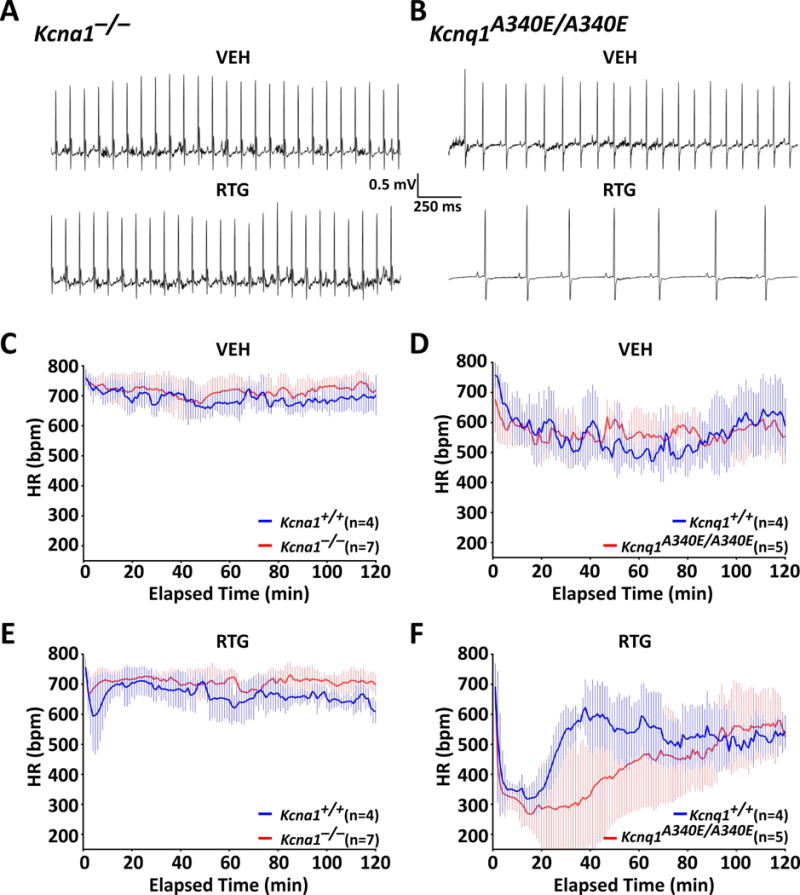Figure 3.

KCNQ activation transiently decreases heart rate in Kcna1 and Kcnq1 mice. Representative 2-s ECG traces taken ~30 min after injection of either VEH or RTG showing HR effects in Kcna1−/− (A) and Kcnq1A340E/A340E mice (B). Plots showing HR responses for the 2 h immediately following VEH (C, D) and 10 mg·kg−1 RTG injections (E, F) in Kcna1 and Kcnq1 mice. Baseline HRs were not significantly different between WTs and mutants of either strain. Following RTG, HR transiently decreased from baseline rates by approximately 50–100 bpm and 250–300 bpm in Kcna1 (Tac:N:NIHS-BC) and Kcnq1 (C57BL/6) strain mice, respectively. At 38 min after RTG administration, HR was significantly different (P ≤ 0.05) between C57BL/6 Kcnq1+/+ and Kcnq1A340E/A340E mice (effect of time: P < 0.0001, F119,833 = 6.664; genotype: P = 0.21, F1,7 = 1.935; interaction between time and genotype: P < 0.0001, F119,883 = 2.634; two-way repeated measures ANOVA, Sidak’s post hoc). HR did not differ significantly between RTG-treated Tac:N:NIHS-BC Kcna1+/+ and Kcna1−/− mice.
